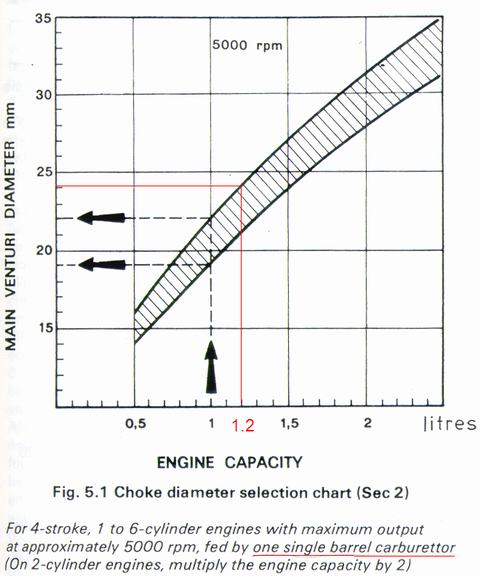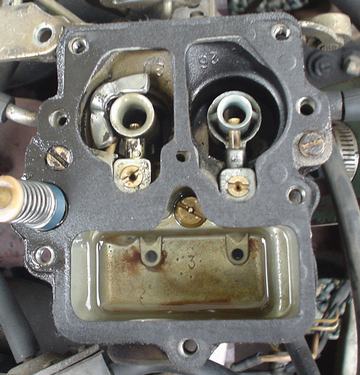Here's what the text says about this chart, in regards to progressive carbs (like our Hitachi, or the Weber 32/36):Quote:
the secondary choke [venturi] size can be determined from Fig. 5.1 and the primary choke size is normally 1 mm less.
For a 1200cc engine at 6000 rpm, I picked a 26mm secondary venturi based on this chart and interpolating for 6000 rpm based on the DCOE chart.
Now, looking at the A12 specs, it seems Nissan used the same logic:
A12 secondary venturi: 26 mm
Remember that this is just a starting point. Actual test driving or dyno runs will show if slightly bigger or smaller is desired. Like, it depends on what you want, more peak HP at the expense of partial throttle response and low-speed operation, or the reverse. Note the the chart indicates a range of size (the shaded area), but you could go outside that if you wanted to enhance flat-out acceleration and don't care about off-idle performance (example: fitting a DGV Weber 32/36 to a stock A12).
The Weber book also says:Quote:
the difference between the pimary and secondary choke diameters may need to be increased 1 mm or 2 mm in order to give more flexibility at the lower engine speeds.
This would explain why Nissan gives small primary venturis to our A-series.
A12 secondary venturi: 20 mm
That's a lot smaller than the book recommends, but then this road-going car has very good "flexibility at the lower engine speeds".
Note that most A14 carbs are have venturis of 23/27, so that would probably give a good performance boost for a stock A12, without sacrificing driveability.


 Misc
Misc Tech Section
Tech Section

 0.00 (0 votes)
0.00 (0 votes)







 Surely you have (almost) double the potential flow with both barrels open and are then seriously over-carbed.
Surely you have (almost) double the potential flow with both barrels open and are then seriously over-carbed.

